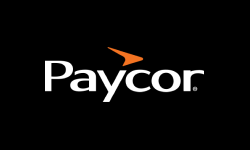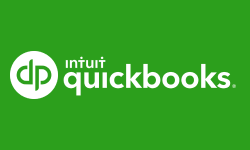Effective payroll management is a critical aspect of small business sustainability, regardless of its scale or workforce size. However, the approach to payroll can vary depending on factors such as company size, budgetary constraints, and time availability. Making an informed decision requires a comprehensive grasp of the payroll process and its intricacies.
With careful consideration of certain factors, small business owners can navigate the complexities of payroll management and ensure the smooth operation of their organization. Additionally there are several steps involved in the process of doing it manually, but with automation you can simplify it and save your time. Let’s take a quick look at the detailed payroll system.
What Are Payroll Software?
Payroll software is a powerful tool that streamlines the complex process of managing employee compensation within an organization. It automates and simplifies various payroll tasks, allowing businesses to efficiently calculate wages, manage deductions, generate pay stubs, and comply with tax regulations. Read our full Gusto payroll review to know about its features, plans, and how this payroll software works.
How Does Payroll Software Work?
At its core, payroll software operates on a centralized database that securely stores employee information, such as salary rates, tax withholding details, and benefit deductions. This database serves as a foundation for accurate and consistent payroll calculations. When an organization adopts payroll software, it typically involves the following key steps:
- Employee Data Management:
It enables businesses to add and maintain employee data, including personal information, tax forms (e.g., W-4), direct deposit details, and employment agreements.
- Time and Attendance Tracking:
Many payroll software systems integrate with time and attendance tools, allowing for seamless tracking of employee work hours. It ensures accurate wage calculations, accounting for regular hours, overtime, and specific pay rates.
Once employee data and hours worked are captured, the software automatically calculates gross wages based on predetermined salary structures and applicable labor laws. It accounts for factors such as hourly rates, overtime hours, commissions, and bonuses. Additionally, it considers tax withholding, Social Security contributions, and other deductions to calculate net pay accurately.
Payroll software simplifies tax compliance by automatically calculating and withholding federal, state, and local taxes from employee wages. It ensures accurate tax deductions and generates tax reports, facilitating the timely filing of tax forms such as Form 941 and W-2 statements.
The software generates pay stubs or electronic pay statements that outline the breakdown of earnings, deductions, taxes, and net pay for each employee. These documents provide transparency and help employees understand their compensation structure.
Advanced payroll software often offers reporting and analytics features that provide valuable insights into labor costs, employee trends, and budget allocation. This data can aid in strategic decision-making and financial planning.
- Integration with Accounting Systems:
Payroll software can integrate seamlessly with accounting systems, allowing for automatic journal entries, general ledger updates, and financial reconciliation. This integration minimizes manual data entry errors and ensures accurate financial records.
By leveraging the capabilities of payroll software, businesses can streamline their payroll processes, reduce administrative burden, minimize errors, and enhance overall efficiency.
How To Set Up A Payroll System?
Establishing a reliable payroll system is a critical component of your organization’s success. It’s the heartbeat of your employee compensation process, ensuring that everyone gets paid accurately and punctually. Although, setting up a payroll system seems like a daunting task but with the right guidance it is fairly easy.
Let’s quickly walk you through the essential steps to create a well-established payroll system to streamline your payroll processes and promote an error-free payment cycle for your employees.
Step 1 – Obtain an Employer Identification Number (EIN)
Before diving into payroll setup, apply for an EIN through the IRS. This unique identifier will allow you to accurately report payroll taxes and establish your business as an employer.
Step 2 – Acquire Your Local or State Business Identification
Check with your local or state government to determine if you need a specific business identification number or license to operate legally. Obtain the necessary documentation to ensure compliance with local regulations.
Step 3 – Gather Employee Documents
Collect essential documents from your employees, such as completed W-4 forms (Employee’s Withholding Allowance Certificate), I-9 forms (Employment Eligibility Verification), and any other relevant employment agreements. These documents will provide crucial information for payroll calculations and legal compliance.
Step 4 – Determine Pay Periods
Choose the frequency at which you will pay your employees, whether it’s weekly, fortnightly, or monthly. Establishing consistent pay periods helps ensure a predictable and organized payroll process.
Step 5 – Obtain Workers’ Compensation Insurance
Protect your business and employees by obtaining workers’ compensation insurance. This insurance coverage is essential in case of work-related injuries or illnesses and helps cover medical expenses and lost wages.
Step 6 – Consider Optional Employee Benefits
Evaluate and decide on optional benefits you wish to offer your employees, such as health insurance, retirement plans, or flexible spending accounts. Research for providers and establish the necessary systems to facilitate these benefits.
Step 7 – Open a Dedicated Payroll Bank Account
To streamline payroll processes and maintain financial clarity, open a separate bank account dedicated solely to payroll transactions. This account will help you manage payroll funds, track expenses, and simplify financial reporting.
How To Manually Calculate And Do Payroll?
Manual payroll allows for a hands-on understanding of the intricacies involved in compensation calculations and offers a deeper level of control over the process. In this comprehensive guide, we will walk you through the step-by-step process of manually calculating and processing payroll. Let’s get started!
Step 1 – Calculate Working Hours and Gross Pay:
Begin by collecting timesheets or employee attendance records to determine the number of hours worked by each employee. Multiply the hours worked by their respective hourly rates or salaries to calculate the gross pay for each employee.
Step 2 – Process Payroll Deductions:
Identify and deduct applicable payroll deductions, such as federal and state taxes, Social Security, Medicare, and any other authorized deductions (e.g., retirement contributions or health insurance premiums). Refer to the appropriate tax tables and deduction formulas provided by the taxing authorities to ensure accurate calculations.
Step 3 – Calculate Net Pay and Pay Employees:
Subtract the total deductions from the gross pay to calculate the net pay for each employee. Prepare paychecks or generate direct deposit transactions, ensuring that accurate amounts are disbursed to employees on their designated pay dates. Clearly communicate the details of the paycheck, including gross pay, deductions, and net pay to employees for transparency.
Step 4 – File Tax Reports:
Accurately complete and submit required tax reports to the appropriate tax agencies. This includes filing federal and state tax withholding reports, Social Security and Medicare reports, and any other necessary forms specific to your jurisdiction. Adhere to the deadlines specified by the tax authorities to avoid penalties or late fees.
Step 5 – Document and Store Payroll Records:
Maintain meticulous records of your payroll activities. Document employee information, timesheets, pay stubs, tax filings, and any other relevant documents. Ensure compliance with retention periods specified by applicable laws and regulations. Organize and securely store these records to facilitate future audits or inquiries.
Step 6 – Report New Hires:
Comply with legal requirements by reporting new hires to the appropriate state agency within the specified timeframe. This helps ensure accurate tracking of employment and supports government initiatives such as child support enforcement and income verification.
Common Mistakes Of Manual Payroll System
The manual payroll system is susceptible to certain common mistakes. It’s essential to be aware of these potential errors to ensure accuracy and compliance. Here are some of the common errors:
Manual calculations can lead to mathematical errors, resulting in incorrect employee wages, deductions, or tax withholdings. Inaccurate calculations can lead to underpayment or overpayment of employees.
- Incorrect Tax Withholdings:
Tax regulations can be complex and subject to frequent changes. Failing to accurately calculate and withhold the correct amount of federal, state, and local taxes can result in non-compliance and potential penalties.
Manual payroll systems rely heavily on timely execution of various tasks, such as filing tax reports, submitting payments, or reporting new hires. Missing deadlines can lead to penalties, fines, or even legal consequences.
- Inadequate Record-Keeping:
Manual payroll systems require meticulous record-keeping to maintain compliance and facilitate future audits. Failing to document and store payroll records properly can lead to confusion, inefficiency, and difficulties in addressing employee inquiries or regulatory inquiries.
The manual systems rely on physical documents, such as timesheets, pay stubs, and employee records. Inadequate security measures can result in the loss, theft, or unauthorized access to sensitive employee information. Implementing robust security protocols, including restricted access and secure storage, is crucial to safeguard employee data.
- Manual Data Entry Errors:
Transcribing data from timesheets, tax forms, or other documents into payroll systems manually increases the risk of data entry errors. Typing mistakes or overlooking decimal points can lead to significant discrepancies in employee wages and tax calculations.
How Is Payroll Software Better Than Manual Process?
While manual payroll systems may offer a hands-on approach, payroll software undeniably outshines manual methods in nearly every aspect. The benefits of payroll software extend beyond small businesses and can significantly streamline operations and enhance accuracy for larger organizations. Here are some key advantages:
- Efficiency and Time Savings:
The software automates tedious tasks, such as calculations, tax withholdings, and generating paychecks. This eliminates manual errors, reduces processing time, and frees up valuable resources to focus on strategic initiatives.
Payroll software seamlessly adapts to the growing needs of large enterprises. Be it hundreds or thousands of employees, the software can handle complex calculations, multiple pay rates, benefits, and deductions, ensuring accuracy and compliance at scale.
It stays up to date with tax laws and regulatory changes, reducing the risk of non-compliance. Accurate calculations and timely tax filings mitigate legal issues and potential penalties, offering peace of mind for large enterprises.
- Integration and Data Management:
Payroll software integrates with other HR and accounting systems, streamlining data flow and eliminating the need for duplicate data entry. This integration enhances data accuracy, facilitates reporting, and provides comprehensive insights for strategic decision-making.
The software often includes self-service portals, allowing employees to access their pay stubs, tax forms, and benefits information. This empowers employees, reduces administrative workload, and enhances overall employee satisfaction.
- Security and Data Protection:
A payroll software employs robust security measures to safeguard sensitive employee data. Encrypted storage, user access controls, and regular backups provide a higher level of data protection than manual systems, reducing the risk of data breaches.
- Scalable Reporting and Analytics:
These software offer advanced reporting and analytics capabilities, providing in-depth insights into labor costs, budgeting, and workforce trends. These analytics empower large enterprises to make data-driven decisions and optimize their payroll processes.
In short, embracing technology-driven payroll solutions is the key to staying competitive, minimizing errors, and maximizing productivity in the ever-evolving landscape of payroll management.
Final Takeaway:
Payroll software surpasses manual systems in every aspect. With enhanced efficiency, scalability, compliance, and advanced features, payroll software streamlines operations, saves time, and ensures accuracy. Embracing payroll software empowers small to large enterprises to stay competitive, make data-driven decisions, and optimize their payroll processes, ultimately enhancing productivity and minimizing errors. Transitioning from manual systems to payroll software is a crucial step towards efficient and effective payroll management for every small to large size enterprise.

![Unlocking Ahrefs Premium: Get Ahrefs Premium Accounts [100% Free]](https://s44815.pcdn.co/wp-content/uploads/2023/10/Ahrefs-Free-Premium-accounts-2023-330x250.webp)




















